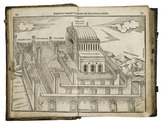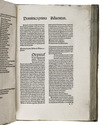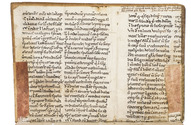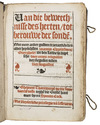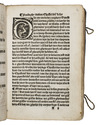A 16th-century poem that encourages the Holy Roman Emperor to start a war with the Ottomans



BRANT, Sebastian.
Ad divum Maximilianum Caesarem invictissimum conctosque Christiani nominis principes et populos, Nenia Sebastiani Brant, In Thurcarum nyciteria, cum arripiende in eosdem expeditionis exhortatione.
(Colophon:) Strasbourg, [Johann Knoblauch], 9 February 1518. 4to. With a small vignette built up from typographical ornaments on the title-page. 18th-century grey paper wrappers. [1], [1 blank], [5], [1 blank] pp. Full description
€ 6,500
(Colophon:) Strasbourg, [Johann Knoblauch], 9 February 1518. 4to. With a small vignette built up from typographical ornaments on the title-page. 18th-century grey paper wrappers. [1], [1 blank], [5], [1 blank] pp. Full description


